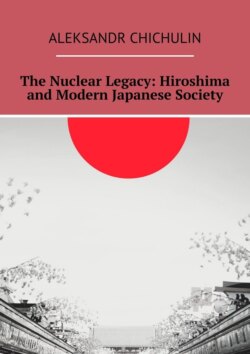Читать книгу The Nuclear Legacy: Hiroshima and Modern Japanese Society - - Страница 4
Dropping the atomic bomb on Hiroshima
ОглавлениеMission “Kid” and choosing Hiroshima as a target
After successfully testing the first atomic bomb, codenamed “Trinity,” the United States was preparing to use this destructive weapon in a real combat operation. This mission was codenamed “Baby”.
General Leslie Groves, commander of the Manhattan Project, presented five members of the US Supreme Military Committee with a plan for the use of an atomic bomb. He considered several potential targets, including major Japanese cities. However, to achieve maximum effect, a target was needed that would not only be an important military object, but would not yet be completely destroyed by conventional bombs.
Thus, on August 6, 1945, the target was chosen – the city of Hiroshima, an industrial and administrative center in western Japan. The city had not been heavily bombed before and remained virtually untouched, making it an ideal site for determining the strength and destructive power of an atomic bomb.
This decision was made with careful consideration and consideration of many factors. Although scientists and some politicians considered warning Japan about the impending use of an atomic bomb, the US leadership decided not to provide the Japanese with any preliminary information. They wanted the nuclear bomb to work as a surprise strike and show full destructive power.
Thus, the morning of August 6, 1945 was a historic moment. The atomic bomb, called “Little Boy” (Kid), was dropped on Hiroshima. Within seconds, the city was turned into an inferno. A huge explosion and radioactive radiation destroyed most of the city and claimed the lives of hundreds of thousands of civilians.
This event marked an important turning point in the history of World War II and ushered in a new era in human history – the era of the nuclear age. The choice of Hiroshima as the target for the use of the atomic bomb caused numerous disputes and debates, and still remains one of the most controversial moments in the history of world conflict.
August 6, 1945: the moment of dumping and destruction
The morning of August 6, 1945, was the culmination of months of work on the Manhattan Project and careful preparation for Operation Kid. At 08: 15 a.m. Japanese time, a B-29 Enola Gay bomber lifted the Little Boy atomic bomb in the sky over Hiroshima.
The bomber’s commander, Colonel Paul Tibbets, named the atomic bomb after his youngest son. He and his crew were well aware of the importance and responsibility of their mission. The mission was high-stress and full of risk-to drop the first atomic bomb in the history of mankind on a city with a civilian population.
Approaching Hiroshima, the crew of the Enola Gay noticed a small haze over the city. It was related to atmospheric conditions and gave the pilots confidence that the chosen target-the city center – would not be hidden by fog. As the bomber approached the target, it was time to make a decisive choice – to reset or cancel the mission.
But the decision was made, and at 08: 15: 17 the Little Boy bomb was dropped. After 43 seconds, it exploded at an altitude of approximately 580 meters above the ground. The explosion led to an instantaneous nuclear fusion and fission reaction that released a huge amount of energy.
The city was hit by a huge shock wave and a bright light comparable to a solar flare. The temperature at the site of the explosion reached millions of degrees, which led to the full destructive power of the explosion. Everything within the blast radius was burned or completely destroyed.
More than 70,000 people were killed instantly and more than 70,000 were injured. The city became a dead zone with charred corpses and rubble. People who were several kilometers away from the center of the explosion received a dangerous dose of radiation, which led to a slow and painful death.
This was the most devastating single attack in human history, but it was only the beginning. A few days later, on August 9, 1945, the Fettman atomic bomb was dropped on the city of Nagasaki, another terrible destruction and thousands of victims.
The tragedy of Hiroshima and Nagasaki left the world in shock. Brand-new weapons have shown their destructive power, and the world has realized that a new era in military and political history has arrived. The decision to use nuclear weapons remained the subject of a long and heated debate and caused many emotional reactions from the world community.
